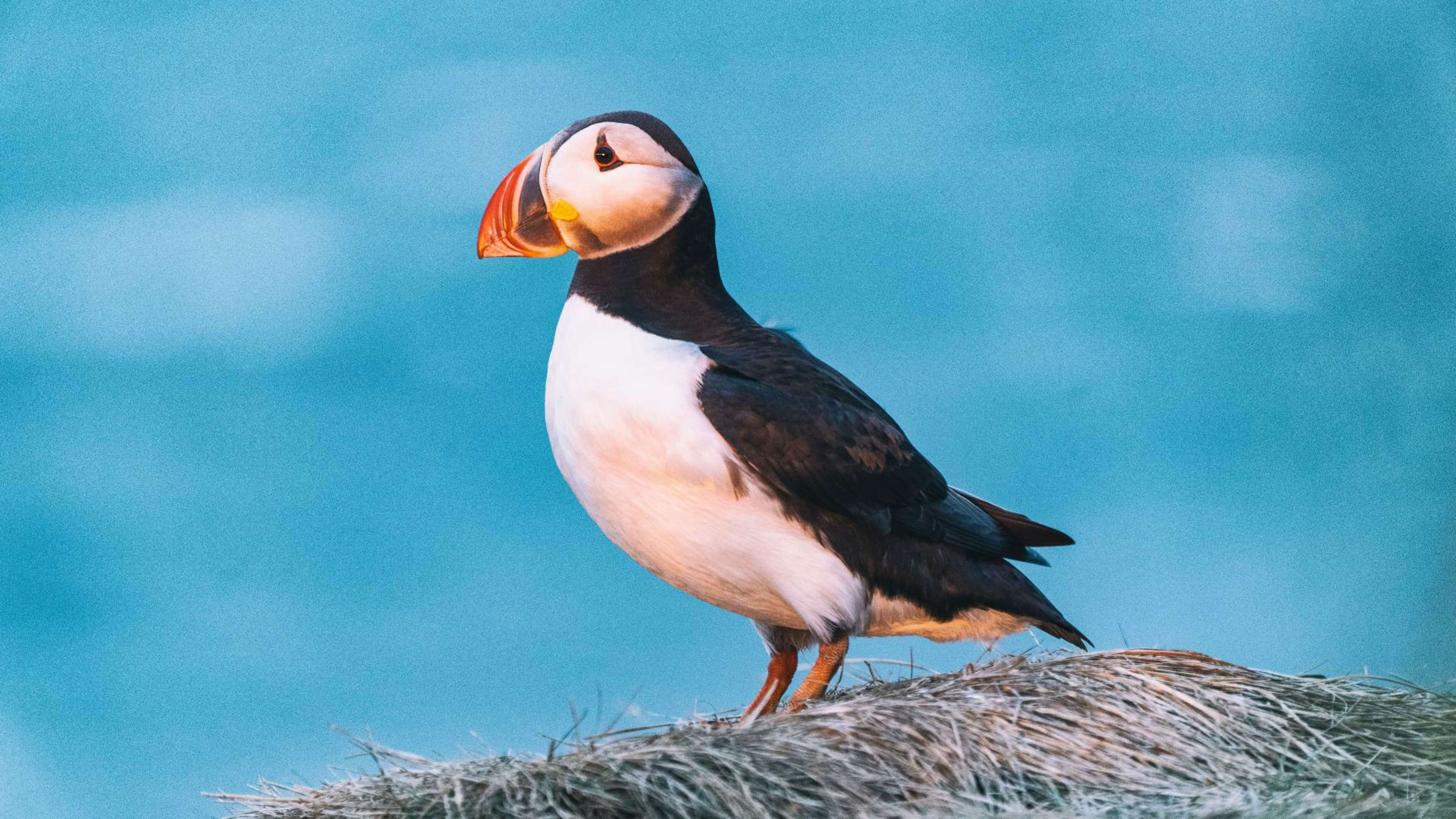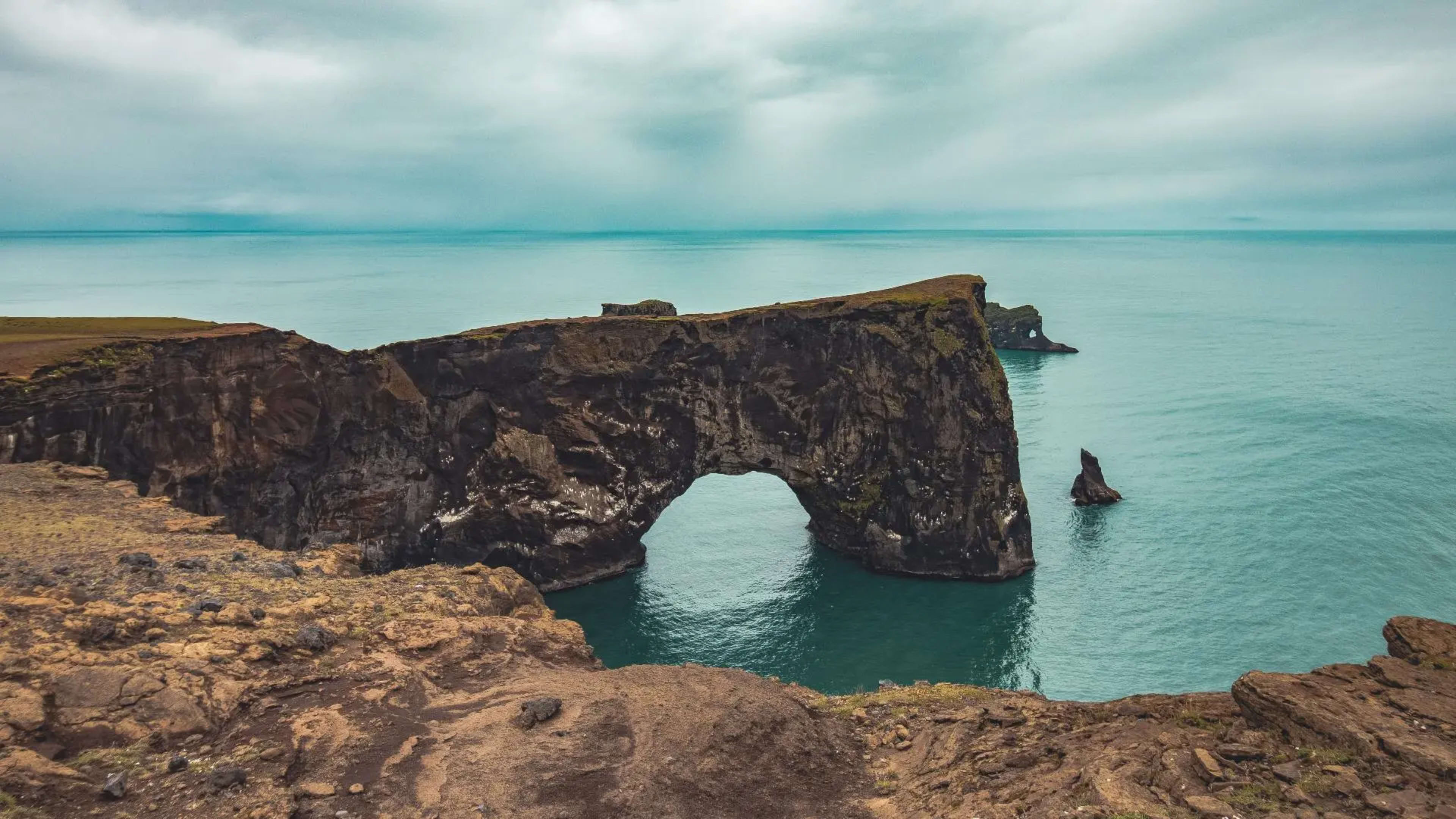Recently many of us have been thinking about ways to travel responsibly and sustainably. If it’s something you’ve been wondering about too, you’re probably looking for ways that you can reduce your impact on places you visit.
Here we’ve rounded up some of the top ways to travel sustainably. But what exactly does this mean? Sustainable travel in Iceland, and elsewhere, boils down to 2 core principles:
- Reducing your impact on the environment
- Having a positive effect on local communities
Depending on where you’re going, this can look like a lot of different things. You might have heard the buzz about ‘sustainable’ destinations like Costa Rica and Iceland. But ultimately, a great deal comes down to the choices you can make as an individual.
- Explore these lower-carbon multi-day tours and guided group tours.
Sustainability is just one side of the coin. It’s also worth thinking about responsible travel. Iceland luckily makes it easy for you to do both, so you can tread lightly in nature and amongst local people.
If you’re thinking about how to be a sustainable traveler, read on for our tips. We focus mainly on Iceland, but a lot of this advice applies to other destinations too.
1. Reduce or offset your carbon footprint
This is the biggie, and often the hardest. Let’s face it, a lot of travel involves flying, especially to island destinations like Iceland. It’s not always possible or practical to avoid taking a flight, so what can you do to reduce the impact of it?
Carbon offsetting can be a good option. However, schemes vary and it can be hard to know if the money you spend offsetting your trip actually goes to eco-friendly causes. So it’s important to do your homework before paying extra to offset your emissions.

In Iceland, the Kolviður scheme, also known as the Iceland Carbon Fund, has a direct local impact. Using their handy calculator, you can work out the carbon impact of your entire trip, including flights, driving, and accommodation.
You then pay into a fund which is used to plant new trees in Iceland. This contributes directly to the reforesting of the country. And that not only helps absorb carbon, but stops desertification in Iceland’s dry landscapes.
Before the Vikings arrived, Iceland was more than 25% forest, but today it’s just 2%. The Icelandic government is looking to reverse this trend, and you can play your part!
- Find out more about the country’s environment in our Iceland nature & landscape guide.
2. Stay at a local hotel or guesthouse
Staying at a hotel might sound counterintuitive at first if you’re thinking about how to support the local economy. And actually, this might not be the best option in every destination. But let’s take the example of Reykjavík.
In recent years, the number of short-term rental (e.g. Airbnb) apartments in the city has grown astronomically. Whilst these can be great for getting a taste of local life, there’s evidence to suggest that they have had negative impacts for locals.
First, short-term rentals reduce the overall number of apartments available on the market. This pushes up the cost of living for local people. Second, the effects of a large number of people coming and going in a formerly residential apartment can create an antisocial atmosphere for neighbors.

Hotels on the other hand are purpose-built for travelers. By staying in one, you help reduce pressure on the rental market for locals. And hotels provide people with jobs. But why should you care about this?
The fact is, cities are made by the people that live in them. If locals are priced out, then cities lose the originality and spark that attracts visitors in the first place.
If you do choose a short-term rental, why not look for one where you stay with your host, rather than in a whole apartment to yourself? This ensures your money is going to a resident of the city and you could make a local friend.
Finally, guesthouses and farmstays are a great option if you’re looking for local authenticity. Especially in the countryside, they’re often run by passionate local people who’ll give you loads of tips on where to go and what to see.
3. Respect the local culture

One of the keys to sustainable travel is treading lightly. Carbon footprints are just one example of this. Your own impact as a visitor from a different culture is something you should think about too.
Exploring the differences between your home culture and another is one of the great joys of traveling abroad. You learn so much about yourself and your worldview, and you get to see things from a totally different perspective.
Let’s take an example from our home country. Icelanders are fiercely proud of their bathing culture. Swimming pools are the heart of the community in towns and villages all over Iceland.
But Icelandic bathing culture comes with its own particular etiquette. For example, you have to shower naked for cleanliness before entering the pool. If you ignore this rule, you’re likely to upset local people. And they might not hold back from calling you out on your behavior.
- Learn more about Icelandic bathing customs in our spas & hot springs guide.
- Blog: Iceland hot springs & geothermal pools.
No one wants to be the rude tourist, so it pays to learn about the place you’re visiting and adapt to local customs and norms wherever you can.
4. Leave no trace in nature
Many destinations around the world are only getting more popular, and Iceland is no exception. But this increased interest can come at a cost to nature, especially in more remote areas.

Iceland has a number of incredibly sensitive environments that bruise easily. For example, lava fields are often covered in a thick layer of green moss that takes hundreds of years to grow. If you disturb or remove this moss, the scar will be visible for decades.
Another example is off-road driving. In Iceland this is strictly banned, and not because Icelanders aren’t motorheads. Off-road driving can disrupt the growth of moss and other small plants and even cause green land to turn to desert.
- Find out more about the rules of the road with our guide to driving in Iceland.
Litter can also have a negative effect. It can get lodged between rocks, float out to sea, or be eaten by animals. So always make sure you take yours with you and dispose of it in a trash bin. In towns and cities, recycling bins are located on the street.
Top tip: If you buy a canned or bottled drink, leave the container on the purple shelf next to the trash bin if there is one. Homeless people return these to collect the bottle deposit, and this is considered a polite way to help them out.
By respecting these rules, you’re ensuring that Icelandic nature stays pristine and unspoiled for future visitors (including yourself!).
5. Eat local
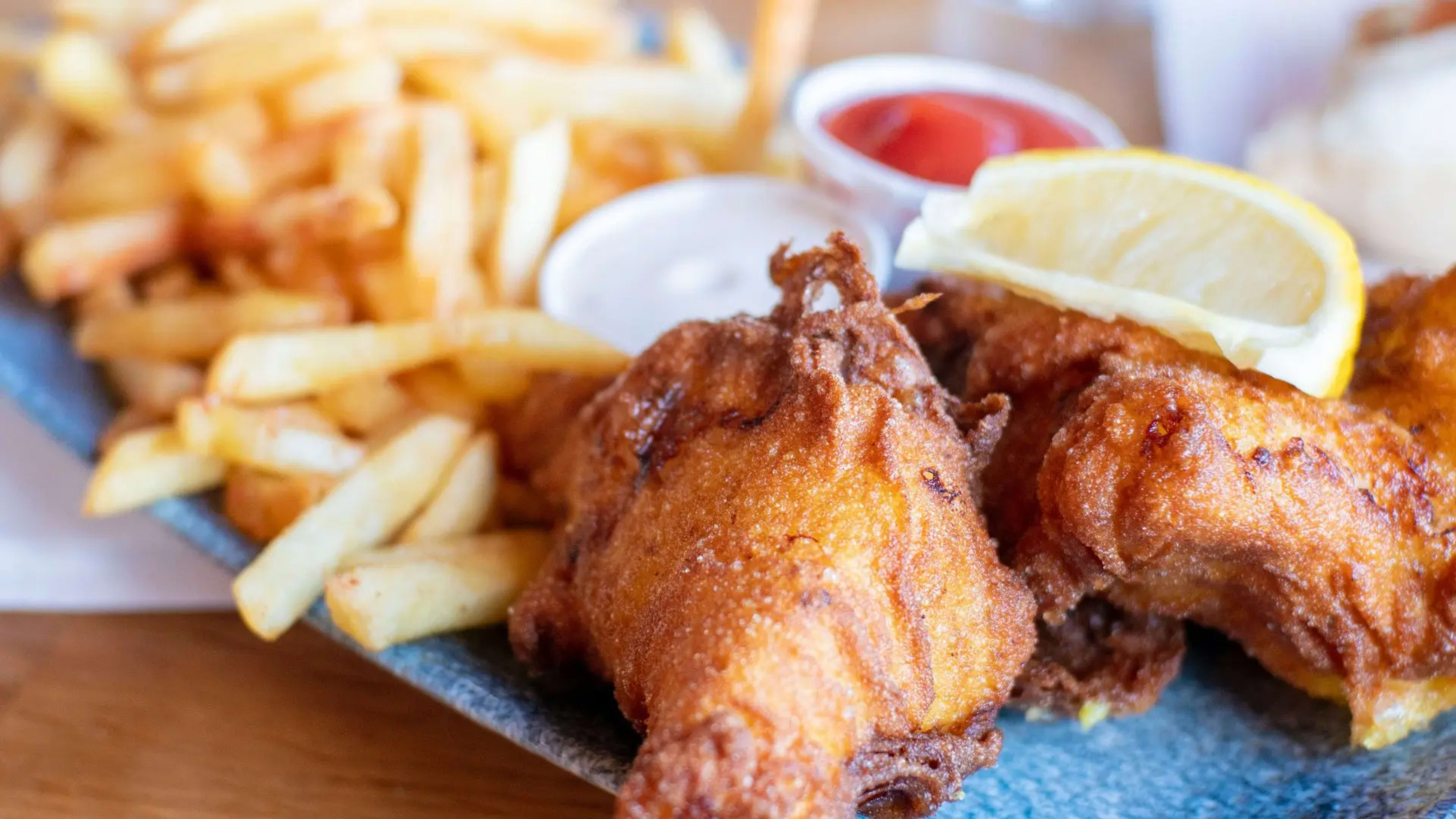
One way to reduce your overall carbon footprint is to eat local. In Iceland, there’s so much locally grown produce available. You can get tomatoes, cucumbers, bell peppers, salad leaves, and fresh herbs that are grown in greenhouses powered by geothermal energy.
Depending on the season, you can also get local potatoes, root vegetables, and berries that are grown outdoors.
Look out for Icelandic flags on produce at the supermarket. At cafés and restaurants, choose dishes that feature seasonal Icelandic ingredients.
- Learn more about what Icelanders eat in our food & restaurants guide.
Produce such as eggplant, avocados, zucchini, apples, citrus fruits, and tropical fruits are all imported to Iceland. They’re often flown in to preserve freshness, but this comes with a very high carbon cost.
Almost all dairy products aside from imported cheeses are produced locally in Iceland, so these are a safe bet for low food miles. Skyr is an Icelandic yogurt-like product that we’d definitely recommend with some local berries!
Icelandic seafood is also plentiful, as well as extremely fresh. Look out for white fish like cod, haddock, and ling, and freshwater fish like Atlantic salmon, brown trout, and Arctic char. Locally caught mussels and prawns are also available.
Local meats include lamb, beef, chicken, and sometimes pork. Icelandic sheep essentially roam free, grazing on mountain grass, reducing their overall carbon footprint.
6. Reduce your waste footprint

Another way to tread more lightly is to reduce the amount of waste you create on your trip.
An easy win in Iceland is skipping bottled water and drinking straight from the tap. It’s actually the same stuff! Bring a refillable bottle and top up at cafés, restaurants, pools, and water dispensers around Reykjavík to reduce plastic waste.
Bringing your own shopping bags with you is a good idea too. Single-use plastic bags were banned in Iceland in 2021, so it makes sense to bring your own tote bags for souvenirs and food shopping.
7. Shop at local businesses
As a consumer, supporting local businesses is one of the biggest ways you can have an impact. Spending your money at independent shops, cafés, and restaurants ensures that more of it goes to local people.
- Wander the city’s charming shopping streets on a multi-day tour from Reykjavík.
Luckily, this is quite easy in Iceland. Due to the country’s small size, many international chains haven’t set up shop in the country. This means there’s a vibrant community of local businesses.
And that’s not only better for Icelanders, but better for you as a visitor too. Who wants to go to the same chain shops and cafés as you would back home? Don’t be afraid to step away from familiar brands and try something different.
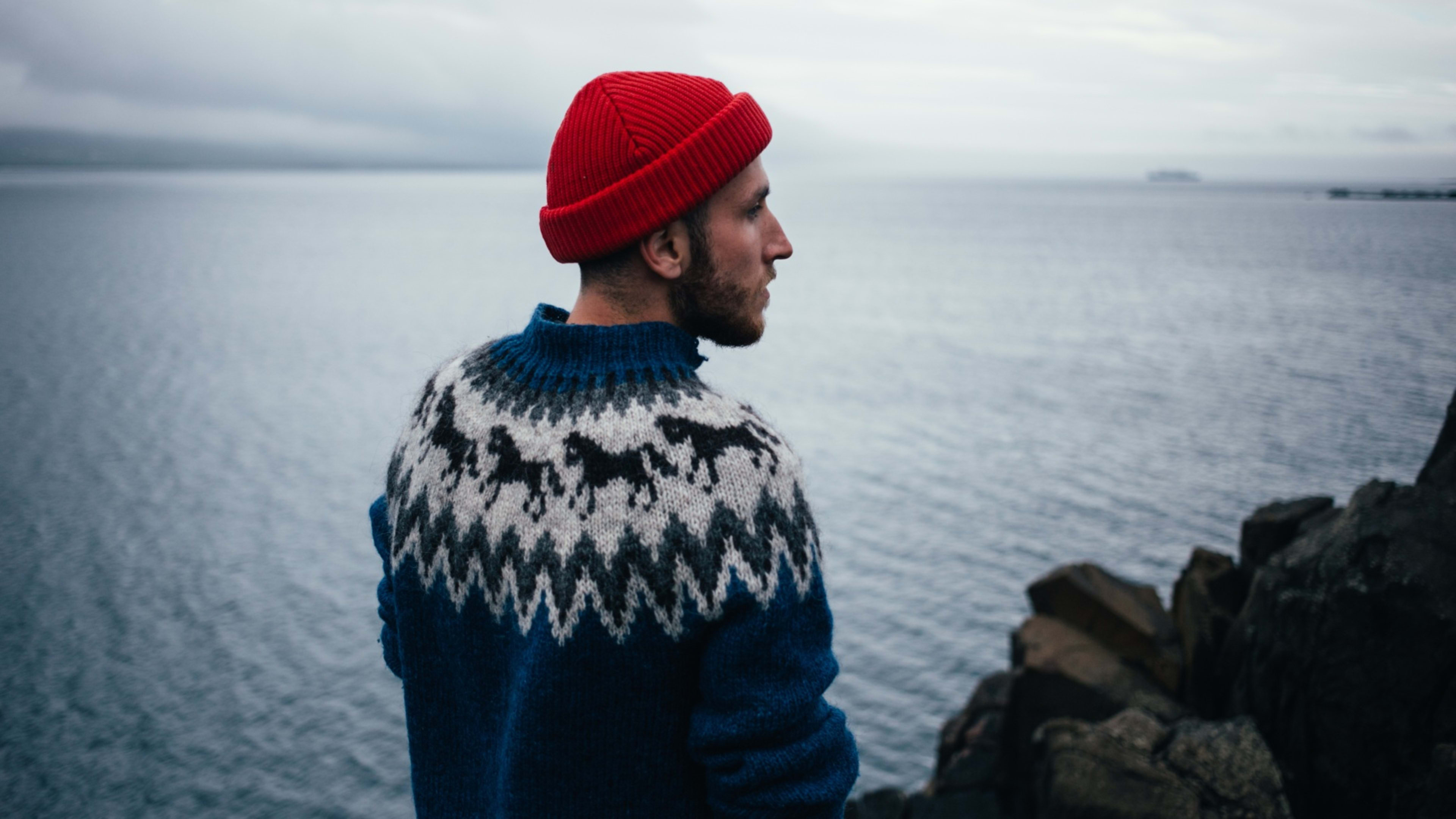
Of course, within Iceland there are some home-grown chains. So if you want to have the biggest impact, opt for independent cafés, pick up lunch at a local bakery, and seek out Icelandic-made souvenirs at gift shops.
Examples of great souvenirs designed or made by locals in Iceland include:
- Traditional Icelandic woolen sweaters (lopapeysur), scarves, and gloves
- Icelandic jewelry
- Cosmetics made with Icelandic mountain herbs & angelica
- Local foods, such as artisan chocolates, berry preserves, and smoked fish
- Paintings & pottery by Icelandic artists
- Posters & prints of local artworks
- Books by Icelandic authors
- Vinyl records, CDs & merchandise by Icelandic musicians
If you’re not sure about where something comes from, check the label before buying. Sometimes items with the Icelandic flag or the word ‘Iceland’ aren’t actually made in Iceland.
8. Choose lower-carbon transport
Consider sustainability when you book your flight to Iceland. Here are a few tips on how you can reduce the carbon footprint of your journey:
- Use a booking site that shows the flights' carbon emissions, so you can choose the lower-carbon option.
- Choose direct flights. Planes burn the most fuel during take-off and landing, which means the carbon emission from a layover flight is higher than on direct flights.
- Travel with airlines that offer high-quality carbon offsetting schemes. If the airline doesn’t participate in a carbon offsetting scheme, consider donating to one yourself.
Once you’re in Iceland, there are many ways you can reduce your carbon footprint.
If you’re on a self-drive tour, go for a car with greater fuel efficiency and don’t get a bigger car than you need. Plug-in hybrid and fully electric vehicles are becoming more commonplace, so check if your tour operator can supply one for you.
A greener travel option in Iceland is a multi-day tour or guided group tour by bus. That way, you split emissions with your fellow travelers and reduce your individual carbon footprint.
- Check out these lower-carbon guided group tours.
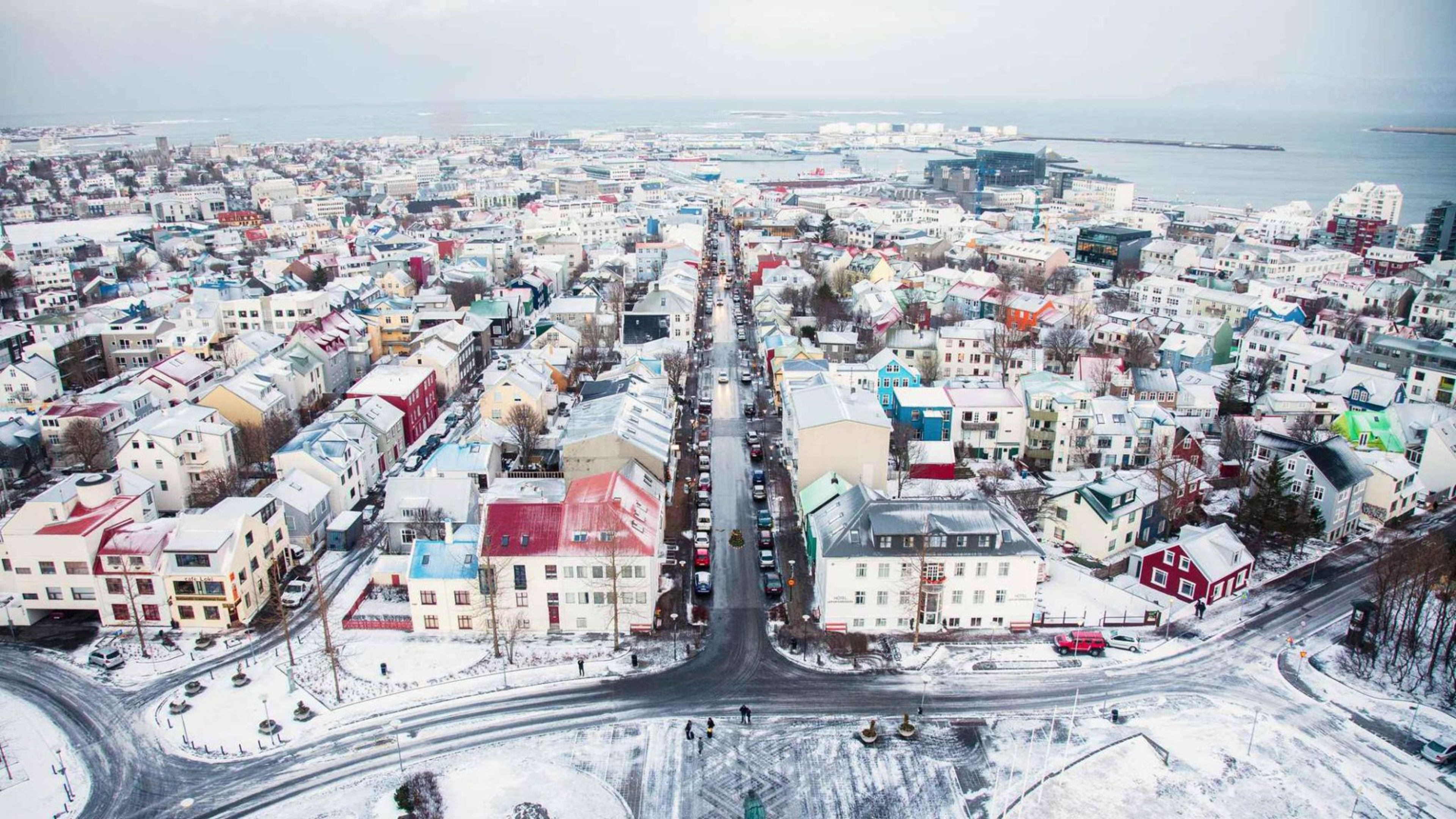
Whilst you’re in Reykjavík, there’s no shortage of alternative modes of transportation. Much of the old city center is accessible on foot. Walking is also a great way to explore hidden streets and make the most of coastal paths.
If you’re traveling further, you can hire a bike or e-scooter. Reykjavík has miles and miles of well maintained, dedicated cycle paths.
Icelanders love e-scooters. You’ll find them dotted around the city ready for you to pick up and ride, all you need to do is download an app. There are a few competing services, with Hopp and Wind being the most popular.
Reykjavík also has an extensive city bus network. Look out for stops marked with a red S (for strætó, the Icelandic word for bus). You can pay by downloading the Strætó app on your phone.
9. Learn the lingo
A great way to show respect for the culture of the place you’re visiting is to learn a few phrases in the local language. Iceland is no exception when it comes to this.
The native language of most Icelanders is Icelandic, which is related to Norwegian, Danish, and Swedish. And even though most of them speak fluent English, they’ll appreciate and respect your efforts to speak the language!
So why not start with a few of these phrases?
Don’t be shy about having a go. Even if you make a mistake, it can be a great way to make a connection with a local person. What have you got to lose?
Plan your sustainable travel in Iceland
So we’ve seen that sustainable tourism is about more than just being environmentally friendly. It’s also about supporting local economies and having a positive impact on local people.
But it also happens to be the case that sustainable travel experiences tend to be more authentic and enjoyable. You come into closer contact with the local culture, and try new things that you wouldn’t back home.
There’s talk about how the travel industry can do more to promote sustainable travel, and that’s something we’re committed to at Iceland Tours.
We’re actively developing ways to reduce the carbon impact of our self-drive tours. For example, we now offer the option of a hybrid vehicle on all our self-drive tours (except in the highlands), with electric vehicles coming later.
We’ll also start sharing travel tips here with all of our customers to help them find out how to travel more sustainably. As an Icelandic-owned business, we care deeply about the effect we have on our home country.
All that said, you can start thinking about the impact you’ll have on your trip to Iceland right away. Browse these multi-day tours and guided group tours and start planning your next adventure today!

